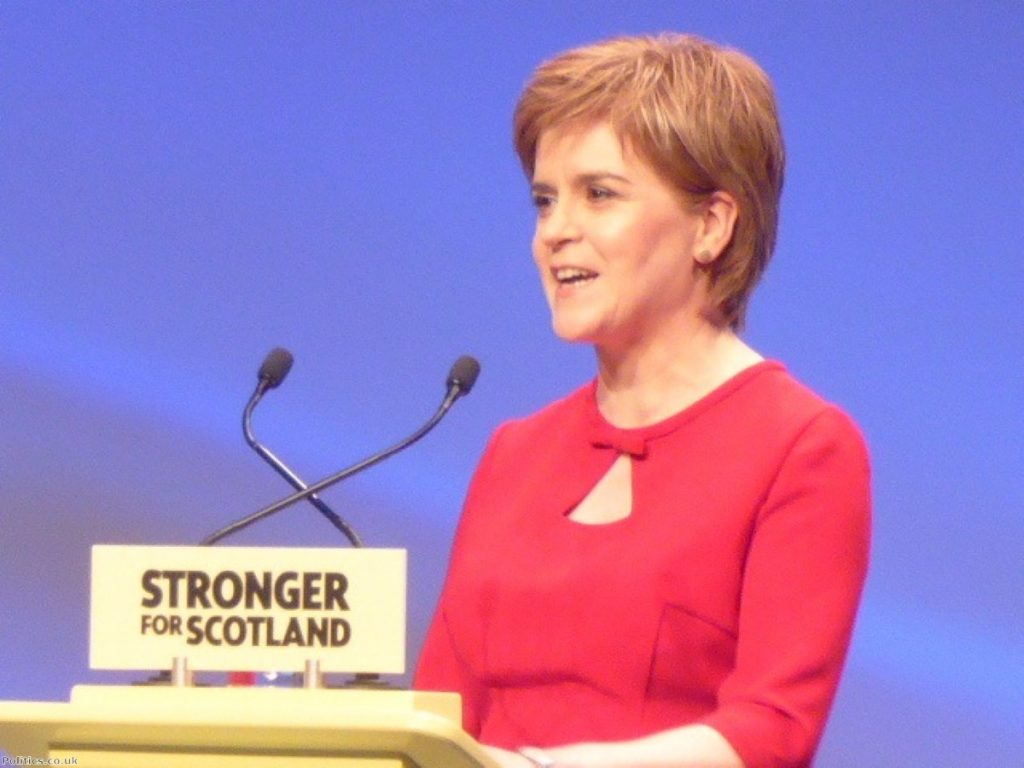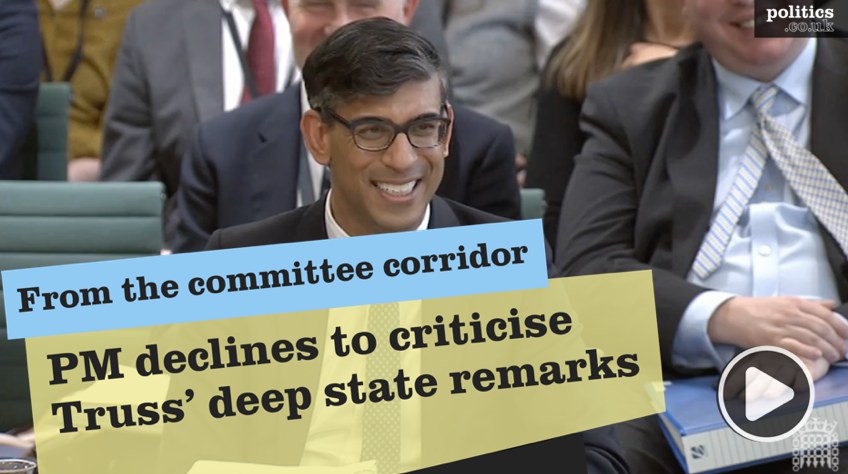The SNP’s income tax policy puts them firmly on the centre-right
By David Torrance
It’s usually worth paying attention when Nicola Sturgeon says the same thing twice; it means she and her party – the SNP – wants a particular message to lodge itself in voters’ minds. The nationalists, like New Labour, well understand that message discipline is key.
There was such a moment early on in last night’s Scottish leaders’ debate on STV, the second of three due to take place before the parliamentary elections on May 5th. Following lengthy exchanges about new income tax powers, the first minister said her plans put the SNP “in exactly the right place”– the same line she used on BBC Scotland last Thursday.
In other words, she was ostentatiously pitching her political tent in the centre ground. Now anyone paying attention since 2007 would realise the party has been perfectly consistent in this respect, being neither particularly left or right wing, but rather all things to all men and women. Sturgeon and others have studied the New Labour playbook and learned it well. They know elections are won from the centre ground.


Tax, therefore, provided the perfect basis upon which to drive home this centrist message, with Sturgeon clearly positioning herself between Scottish Labour on the left (who want to increase income tax bands by a penny) and the Scottish Tories (who don’t want Scots to pay any more than those in the rest of the UK). Key to this was her promise to forego the chancellor’s planned threshold increase for the 40p rate, raising it only in line with inflation.
But in opting for what many observers (even sympathetic ones) have called a “timid” approach to income tax, the SNP has also essentially repudiated a lot of its previous attack lines, not least the regular cry that Labour are little more than ‘Red Tories’, although a lady in the audience last night had a go by referring to “ScotLab Tories”. Those on the left are particularly upset that Sturgeon has U-turned on restoring the 50p rate for higher earners.
Nicola Sturgeon reiterates that she wants to eventually see a 50p top rate of income tax in Scotland during a… https://t.co/0TGhJRldnd
— BBC Politics (@BBCPolitics) March 28, 2016
Indeed, judged on their respective proposals for income tax, the SNP are not only in the centre but more accurately the centre-right. As of yesterday they’ve been outflanked on the left by the Scottish Greens (who want an 18p lower rate and 60p upper rate), Scottish Labour and the Scottish Liberal Democrats (who both want a penny increase). Only one party finds itself to the right of the Nationalists: the Scottish Tories, who have proposed a new 30p band but basically want to preserve the fiscal status quo.
Again, this is nothing new. The SNP’s “centre-left” or “left-of-centre” branding has always been more of a marketing ploy than an accurate description of its ideology. The majority of Scots like to think of themselves as left wing and will therefore only vote for parties that describe themselves as such. Furthermore, nationalists realise from surveys of public opinion that most Scottish voters don’t want being more left wing to actually cost them anything, thus Sturgeon’s modest move is as much as she feels she can get away with.
But the contradictions don’t end there. Despite having regularly lambasted George Osborne and his party for only looking after the rich, the first minister’s rationale for not restoring the 50p rate – that wealthier Scots might leave the country – is uncomfortably similar to the chancellor’s. Thus The Times’ editorial last week, headlined, rather mischievously, “Nicola Osborne”.
Not only does this contradict the SNP’s pledge to restore the 50p rate at last year’s general election, but the Scottish government paper published to underpin the new stance is singularly unconvincing. Where exactly are Scotland’s higher earners going to move to in order to save money? Kensington? The home counties? As critics have pointed out, many higher earners work in the public sector –one departing local government chief executive would soon be replaced by another.
Sensing her weakness on this front, the first minister has spoken of the need for powers to tackle “tax avoidance” (which, given the scenario outlined above, is an obvious red herring). Meanwhile, she and the SNP are covering their backs by attacking Scottish Labour for wanting to make pensioners and lower-income workers pay, as Sturgeon put it last night, “for Tory austerity”. Labour, of course, disputes that, but again it’s quite revealing that the supposedly left-of-centre SNP are now criticising both Labour and the Greens for being too left wing.
It’s proof that Scottish politics is in flux, with long-standing contradictions and tensions becoming much more obvious as a result of the new tax and welfare powers coming Holyrood’s way this year and next. It’s worth remembering that the three Unionist parties’ aims in devolving more power was either a) to compel the SNP to raise taxes or b) to make them appear hypocritical by not raising taxes. The upshot of the Scottish Government’s proposals is that it has done a bit of both.
Of course it’s unlikely, as one frustrated Lib Dem remarked to me last night, “to make any difference” to the election outcome, but nevertheless the dynamic has shifted. For the first time in a devolved election Scotland’s main political parties are talking about how to raise money as well as spend it, taking baby steps towards a much more mature discussion about the redistribution of wealth. And in doing so it’s become clearer than ever that the New Labour project lives on in the SNP.
David Torrance is Alex Salmond’s biographer and the author of The Battle for Britain, an insider’s account of the fight for Scottish independence. You can purchase the book here. Follow him on Twitter.
The opinions in politics.co.uk’s Comment and Analysis section are those of the author and are no reflection of the views of the website or its owners.












